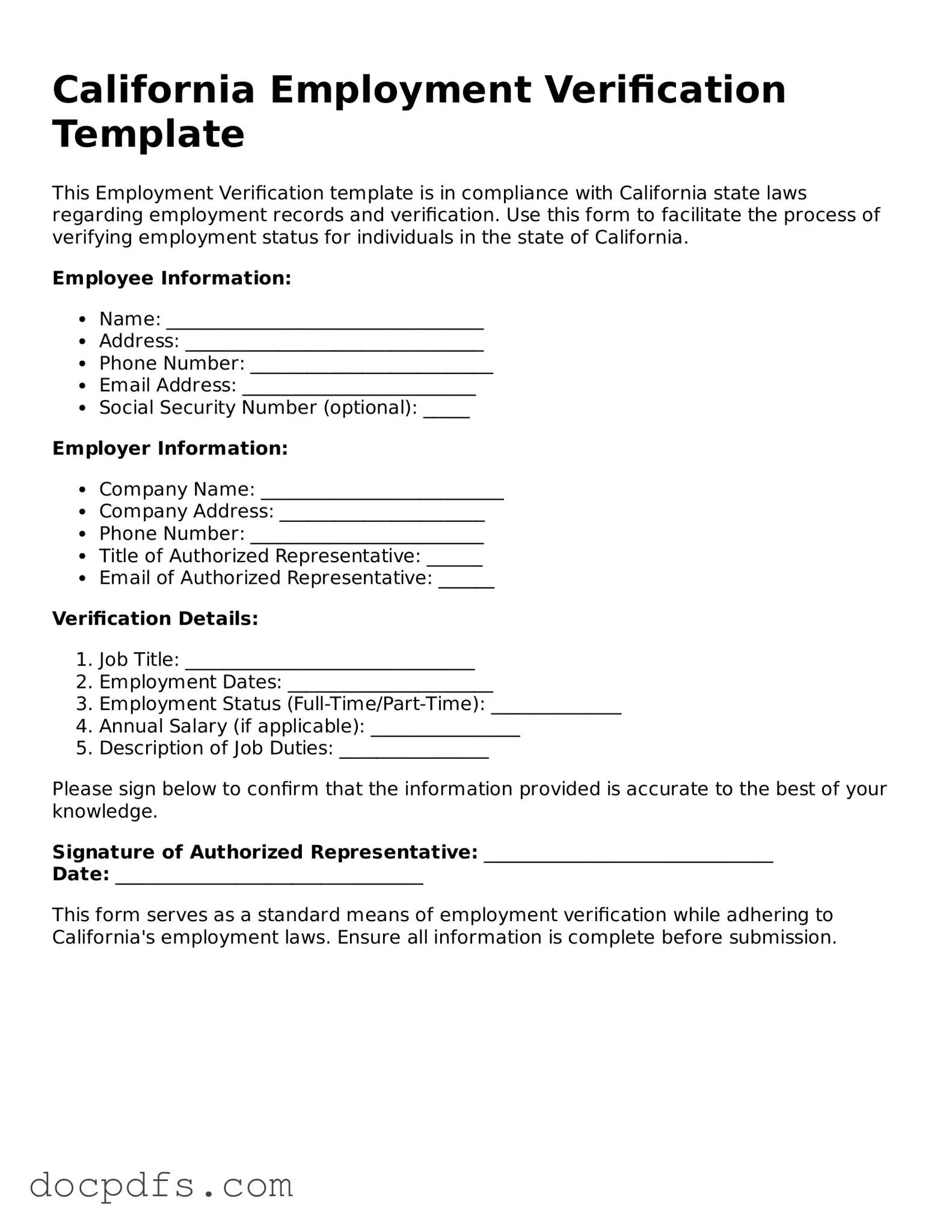The California Employment Verification form is a document used by employers to confirm the employment status of an individual. It typically includes information such as the employee's job title, dates of employment, and salary details. This form is often requested by financial institutions, landlords, or other entities requiring proof of employment.
Employers are responsible for completing the Employment Verification form when requested. Employees may need to provide this form to potential landlords, lenders, or other parties who require verification of their employment status. It is important for both parties to ensure that the information provided is accurate and up to date.
To request an Employment Verification form, you can contact your employer's human resources department. They will provide the necessary documentation and guide you through the process. If you are an employer, you may have a standard form or template available for this purpose.
The form usually includes the following information:
-
Employee's name
-
Job title
-
Dates of employment
-
Salary or hourly wage
-
Employer's contact information
Additional details may be included based on specific requests or company policies.
Generally, there is no fee for obtaining an Employment Verification form. Employers typically provide this service at no cost. However, some companies may have specific policies regarding requests, so it is advisable to check with your employer for any potential charges.
How long does it take to receive the Employment Verification?
The time it takes to receive the Employment Verification form can vary. Employers usually process requests promptly, often within a few business days. However, delays may occur depending on the company's workload or the specific circumstances surrounding the request.
If you notice any inaccuracies on your Employment Verification form, contact your employer immediately. They can review the information and make necessary corrections. It is essential to address any discrepancies as soon as possible to avoid issues with third parties relying on the verification.
